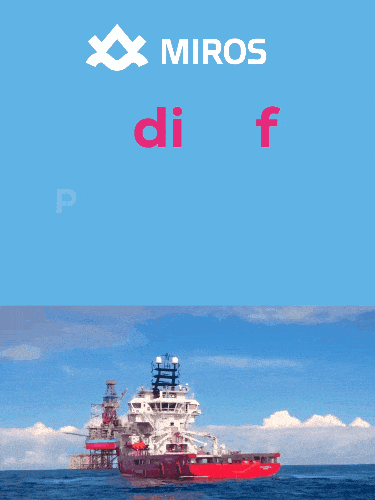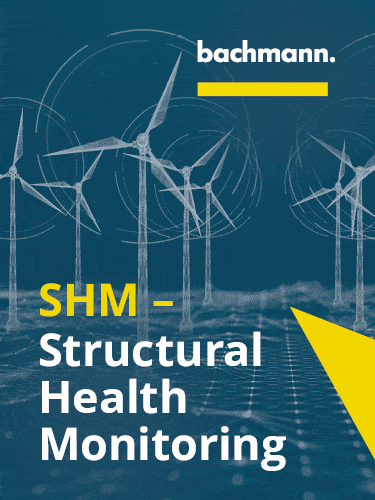News
2024 Annual Report - Outlook for 2025
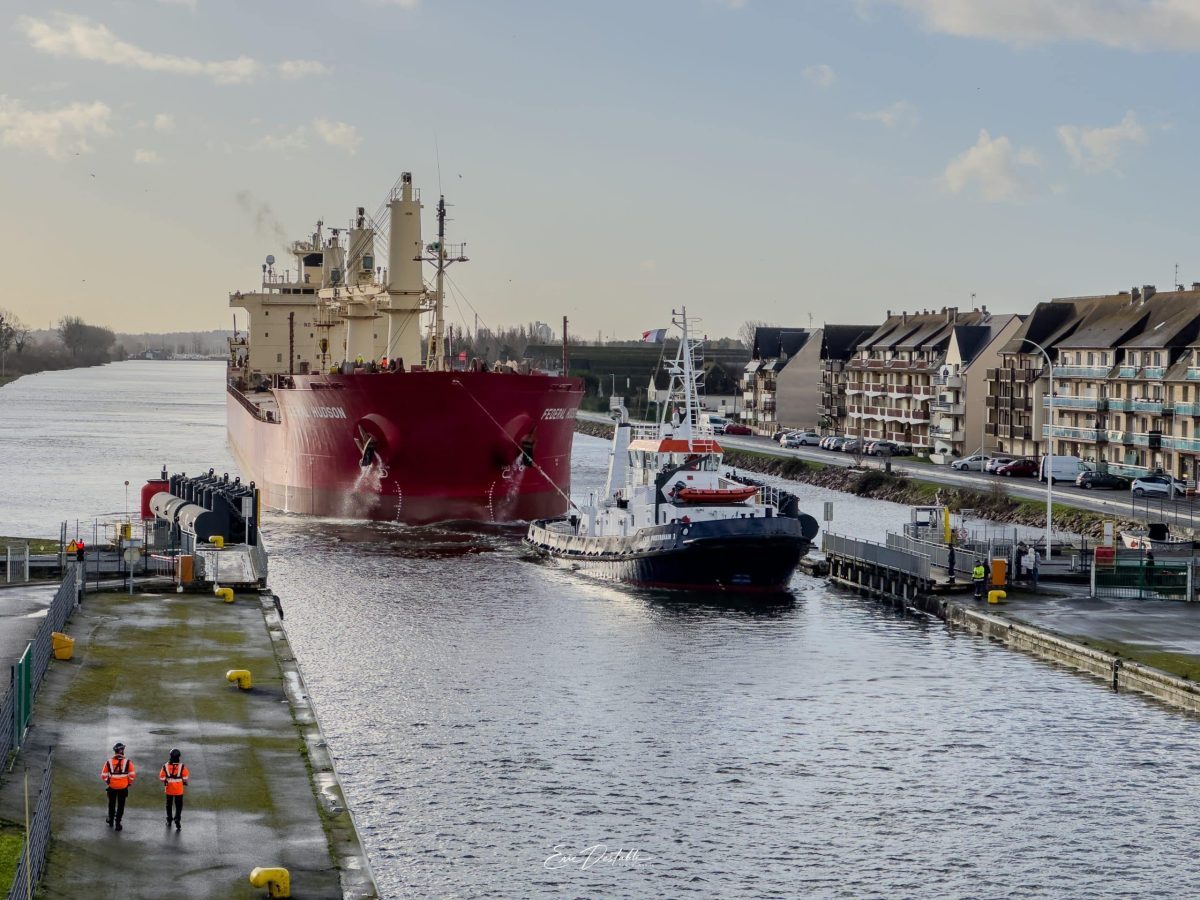
Ports of Normandy's positive results in 2024 attest to our strategic role in Normandy's attractive and dynamic economy. By actively supporting the food-processing, construction, tourism and green transition sectors, Ports of Normandy continues to be a vital partner in the region's economic fabric.
The principal satisfactions of 2024 were the number of customers who placed their trust in our ports, as was attested by the arrival of TSM and Padmos in Dieppe, the submissions to our call for expressions of interest at Cherbourg, and the modernization of the Brittany Ferries fleet at Ouistreham.
Through an ambitious level of investment, Ports of Normandy will continue efforts to support high-value projects - whether they be linked to industrial innovations or the green transition - and pursue the maintenance and modernization of port assets. A strategy focused on the future to further enhance Normandy's economic influence.
In 2024 the passenger business continued its upward trend (+13%). Channel crossings to the United Kingdom (+6.5%) and Ireland (+ 6%) are attracting ever more passengers. As for the cruise business, it is experiencing exceptional growth (+67 %).
Freight is also growing, albeit more moderately after a marked decrease in tonnage in 2023. Conventional (+7%) and cross-Channel (+0.5%) activities are buoyant with cross-Channel freight to the United Kingdom (- 0.13%) stable and to Ireland (+1.5%), growing.
Cross-Channel passengers: general increase
Cross-Channel lines experienced a 6.36% increase (round +110,000 pax), as per market trend. However this progression presents a variation in intensity depending on the destination.
The lines to the United Kingdom operating out of Ports of Normandy saw growth of 6.46% (round +80,000 passengers). In detail, the port of Caen-Ouistreham (815,995 pax) had the strongest showing with a 10% increase, although this is still under pre-COVID volumes (-90,000 pax), while traffic at the port of Dieppe (+ 4.68%) pursued its upward trend to exceed its performance in the days before COVID (376,216 pax 2019 vs 409,698 pax 2024).
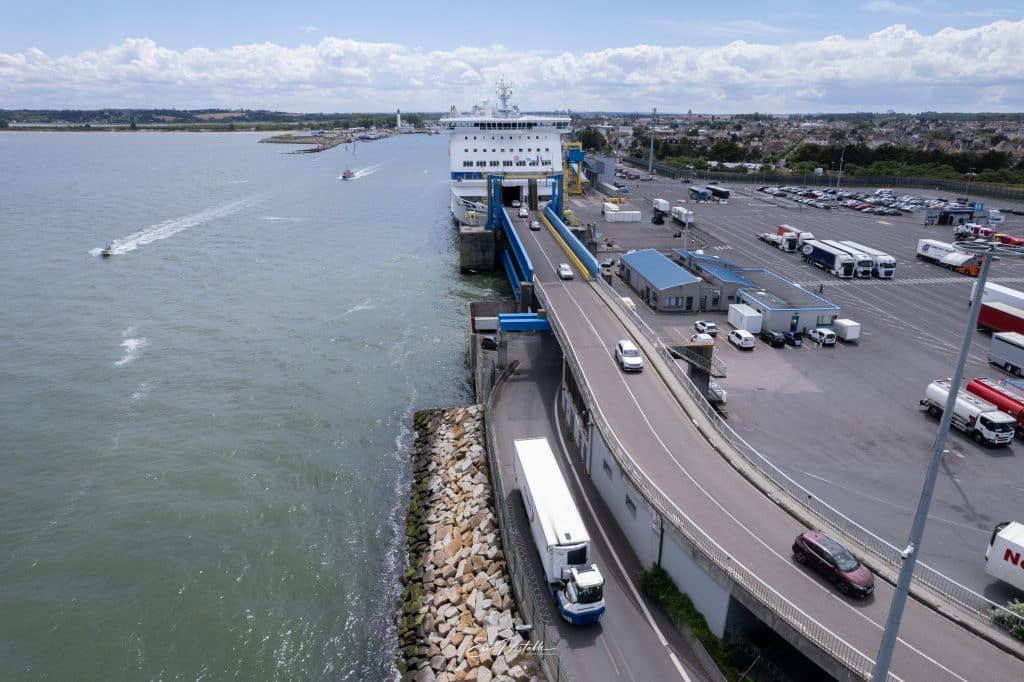
At the Port of Cherbourg (222,548 pax), business to the United Kingdom logged a slight fall (1.54%). The 4,000-strong drop in passengers can be attributed to the stoppage of the Guernsey line in 2024 (8,000 pax).
Lines from the Port of Cherbourg to Ireland continue to make gains (nearly 6%). This increase is the result of the dynamic initiated in 2022 when traffic returned to its 2019 levels. As a result, the Port of Cherbourg achieved a new record of 344,913 passengers. In addition to the WB Yeats, which has been working the Dublin to Cherbourg route for the last few years, the Stena Vision, which continued until the end of October 2024, and Brittany Ferries' Salamanca and Santona all contributed actively to this growth spurt.
Ireland now accounts for 60% of Cherbourg's ferry traffic. Volumes in the Irish market out of the Port of Cherbourg are now 50% higher than those of the British market.
Three events marked 2025:
- The arrival in the spring of the Guillaume de Normandie as a replacement for the Normandie. Providing more comfort and services, and having less impact on the environment thanks to its hybrid LNG propulsion, this vessel is yet another asset on the Ouistreham-Portsmouth line, increasing the attractiveness of the busiest line in the west of France.
- The withdrawal of the Stena Vision (3 round trips per week) and, for the moment, the lack of a replacement vessel means that the Port of Cherbourg will no longer be offering sailings to Ireland, and this could weaken volumes to the destination.
- Lastly, the Entry/Exit System (EES), a directive designed to strengthen controls on all border crossings of the Schengen Area, was not introduced in the autumn of 2024 as announced. It may well be introduced in 2025. It will be implemented gradually to keep impacts to passengers and port operations to a minimum.
This activity experienced a 67% increase on 2023 with 30% more port visits and a new record of 360,533 passengers.
Cherbourg is clearly the key player in this burgeoning business, accounting for 359,082 of those passengers. In 2024 the cruise ship business became the principal segment of the passenger sector, ahead of cross-Channel traffic to Ireland (344,913), which also had a record year.
Growth can be explained by the number of cruise ships (63), most of them more than 250 metres long, the loyalty of their operating companies, such as MSC, AIDA and Carnival UK, and the consistently high occupancy rates of the vessels.
With only 7 cruise ships compared to 12 last year, the Port of Caen-Ouistreham showed a 56% decline in cruise passengers (1,451 passengers).
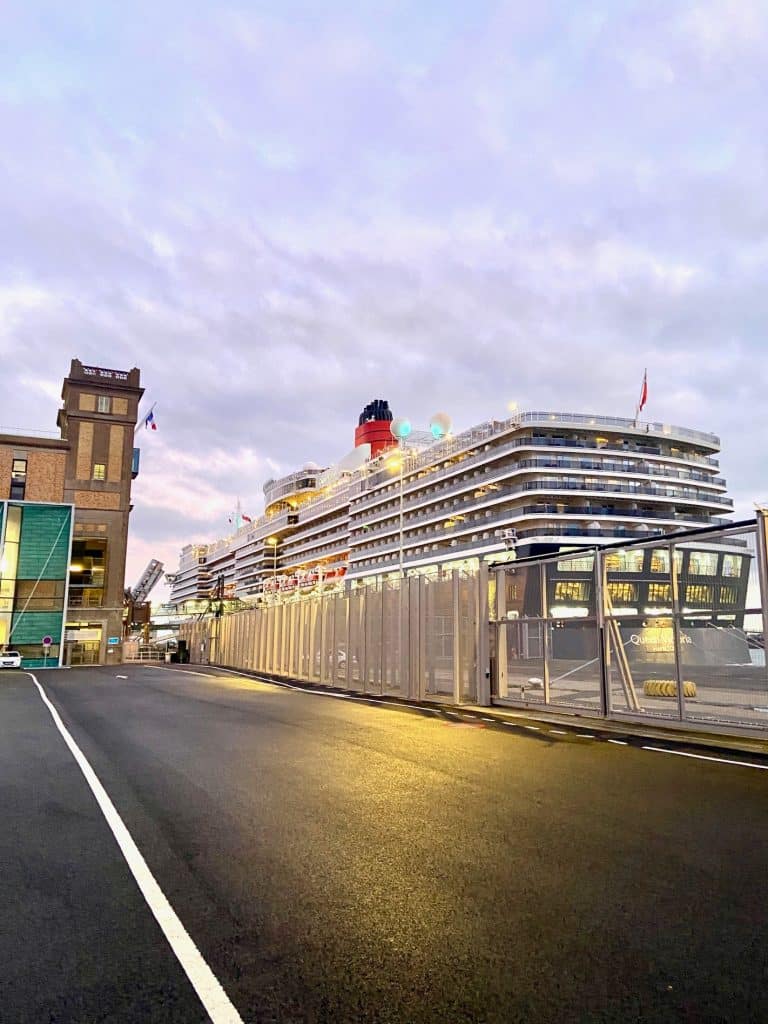
2025 is expected to be down on last year with approximately 60 cruise ships scheduled to visit instead of the 70 in 2024. This trend has been observed across French ports on the Atlantic seaboard and seems to be a temporary fluctuation because bookings for 2026 are already high.
Cross-Channel freight: traffic stable
Cross-Channel traffic in heavy goods vehicles stabilized at 197,403 units (+1.58%) after the 7.29% drop in 2023. This increase was common to both the United Kingdom (+0.86%) and Ireland (+2.56%).
In detail, routes to the United Kingdom grew 3.6% for Caen-Ouistreham (81,202 HGVs) and 10.8% for Cherbourg (7,525 HGVs), but fell 9.6% for Dieppe (24,335 HGVs).
Results for the United Kingdom and Ireland, across all Ports of Normandy sites, are stabilizing after five years of very large variations:
For the United Kingdom, 2024 seems to have brought to a close the downward spiral which began in 2019. Indeed, Ports of Normandy experienced, over a period of 5 years a 27% drop in the number of heavy goods vehicles. This was caused by a general fall in trade between the United Kingdom and the European Union (caused by Brexit and COVID) and an over-abundant supply across the Dover Strait (Eurotunnel included).
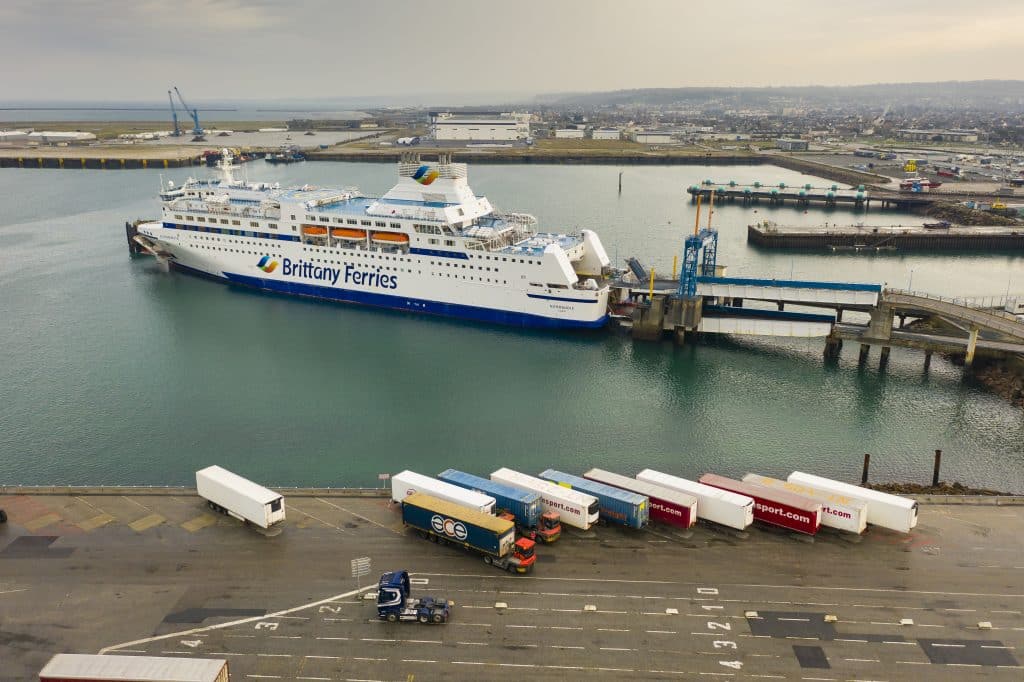
As for freight to Ireland, which had tripled in 2021 (from 35,000 to 100,000 HGVs) before losing 20% in 2022-23, this business recorded a recovery in 2024, which seems to indicate a certain stabilization.
Two events for 2025 are worthy of note:
- Deployment in the spring of the Guillaume de Normandie at Caen-Ouistreham will add significant freight capacity for the busiest crossings thanks to its increased garage space.
2024 Annual Report & Outlook for 2025 - The launch of the rolling road between Cherbourg and Bayonne will create new opportunities for traffic to and from the United Kingdom and Ireland.
Conventional freight: 2024 is yet another good year
Conventional traffic (1,136 ,296 t) saw growth of 7%. It's a great result which highlights our role in supporting the regional economy. The principal drivers for this growth were the sectors of production (cereals), construction (aggregates) and conversion (marine renewable energy, bentonite, oleaginous).
- Construction: -2.15% i.e. 363,904 T.
The construction sector, operating in a rather gloomy context, contracted 2.15%. This fall was mainly due to the absence of milk traffic (-19,000 T for Caen-Ouistreham) and a reduction in wood imports (-3,000 T for Caen-Ouistreham); however the aggregates business, located mainly at Dieppe, grew by 14,000 tonnes (+5%).
- Food processing: +16% i.e. 459,379 T.
The 13% drop in 2023 was recovered with a 16% rise in 2024 (+68,000 T). The restarting of the cereals business (+21.16% / +61,000 T) at Caen-Ouistreham accounted for much of the growth in the food-processing sector, in particular fertilizers (+17.53% / +9,000 T). The importation of oleaginous products at Dieppe continued to grow and also contributed to this recovery (+ 36.79% / + 6,000 T). On the other hand, animal feed decreased by almost 50% (-49.52% / -12,000 T) while imports of molasses were almost stable in terms of volume (-6.45 % / -1,000 T).
- Miscellaneous: +6.23% i.e. 313,013 T
The upward trend in this business was driven by Cherbourg and Caen-Ouistreham.
At Cherbourg, the increased volume (+19,000 T) was essentially the result of traffic involved in the operation of offshore wind farms off Fécamp and Dieppe-Le-Tréport. The transportation of masts and assemblies, turbines and blades to the Fécamp offshore wind farm was completed in the spring of 2024. In the same period, the DEME, based in the Port of Cherbourg, received, stored and then shipped the anchoring systems for the Dieppe-Le-Tréport wind farm. This activity generated 139,648 tonnes of handling (+14,000 T / +14.3%).
The heavy cargo business also contributed to this increase (+11,000 T / +183.64%), moving 16,105 tonnes on Cherbourg wharves in relation to marine renewable energies.
At the Port of Caen-Ouistreham, growth involved for the most part:
- The restarting of the scrap iron business whose tonnages fell to 3,500 tonnes in 2022. In 2024, the Blainville terminal processed 58,856 tonnes (+ 8, 000 T / +16.37%).
- The continued buoyancy of the bentonite traffic (+ 7,000 T / +20.50%) through the port, which has been active for several years now.
Declining traffics include:
- Heavy cargo at Caen-Ouistreham (- 7,000 T / -100%), because of a lack of industrial projects in the vicinity.
- Wind turbine traffic at Dieppe, falling for the second year running (- 2,000 T / -32%), thus highlighting the slow-down of wind farms on land.
- Hazardous products at Cherbourg (-1,000 T / -31%).
Prospects for 2025:
- The thriving offshore wind turbine business at the Port of Cherbourg, with the concomitant progress of the Calvados offshore wind farm, the continuation of the farm at Dieppe-Le-Tréport, and the transportation of blades from the GE-LMWP factory.
- Continued diversification at Caen-Ouistreham, with in particular the possibility of petroleum traffic activity starting up end 2025.
- At Dieppe, the start of engineering works on the Penly EPR should generate some initial port traffic.
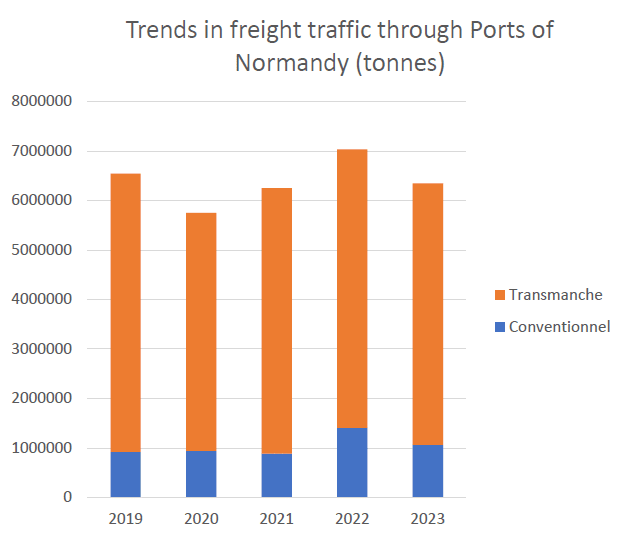
2. FISHING
If the fish landed for sale at the Cherbourg and Dieppe fish markets is added to that landed at the Ouistreham landing point, the total fish tonnage for 2024 amounted to 13,060 T, 1.69% (i.e. -224 T) on the previous year. For the third year running Ports of Normandy has exceeded the 13,000 tonnes threshold despite the difficult context created by quotas, Brexit, purchasing power, climate impacts, etc.
An abundance of scallops is the principal driving factor.
The general decline is the result of opposing trends:
- On the one hand the Cherbourg fish market and the Ouistreham landing point fell 10,03% and 9.45% respectively.
- On the other hand the Dieppe fish market showed sustained growth of 9.63%.
In detail, 2024 tonnage at Cherbourg amounted to 4,579 tonnes (-10.03%), for a turnover of €11,981,441 (15.84%) and an average price per kilo of €2.62, also in decline. This tonnage includes solely the products passing through the fish market. Approximately 1,500 tonnes of small scallops were landed at Cherbourg, but were not sold through the fish market.
This negative result is principally the consequence of the loss of the deep-sea vessel Carpe Diem III. For information, the deep-sea fleet had already been impacted by the stoppage of 2 vessels as part of the French government's scheme to support businesses impacted by Brexit in 2023 (PAI Brexit). This additional loss has reduced the deep-sea fleet at Cherbourg to 4 vessels. This deficit was worsened by the high number of coastal vessels not operating during the summer because it was not economically viable to put to sea.
Three commercial factors to restore the necessary volumes and thus the economic stability of the fish market were identified:
- The need to develop additional activities: small scallops and handling international vessels (Belgian/Dutch).
- Reopening the Port of Dielette to handle vessels from the Channel Islands (crustaceans, line-caught fish).
- Developing services (fish tank rental, handling, cold storage, etc.).
At Dieppe, the 2024 tonnage reached 6,097 T, up 9.64%, for sales revenues of €17,411,474 (-4.22%), i.e. an average sale price of €2.86/k.
Scallop fishing was the driving factor behind this increase. It increased again by 11.69% in 2024 (round +547 T), while the landing of fish was more or less stable at -1.24% (-9 T).
The quantity of scallops landed at Dieppe since 2019 has grown 46%. Dieppe fish market's specialization in scallops is growing year on year. This segment now represents 85% of the tonnages processed by the fish market. However, the decline in the average scallop price can be considered an indicator of market saturation.
As a result, the volume effect does not compensate for the price effect, which is dropping on average by 12.53%, and negatively affects the fish market's turnover.
The growing importance of Dieppe fish market within the Ports of Normandy organization is established. It now represents 46% of the total tonnage passing through the fish market, plus landings at Ouistreham, compared to 39% in 2019.
The fish landing point at Ouistreham recorded a fall of 9.46% with 2,384 tonnes, which amounts to the average volume of landings for the last 5 years.
Prospects for the industry in 2025 include the reopening of Brexit negotiations, and the pressure on prices in 2024.
3. YACHTING
The number of marina visits increased 1.71%, totalling 7,025 visits in 2024. However this increase was not enough to achieve pre-COVID levels, which amounted to around 7,500 visits.
In detail, Dieppe (+3.53% i.e. 2,200 calls) and Caen-Ouistreham (+12.91% i.e. 901 calls) are experiencing an upward trend, whereas Cherbourg Cherbourg (-1.51% i.e. 3,924 calls) is declining.
Despite this downward trend Cherbourg still accounts for 55% of Ports of Normandy marina visits.
This positive result is marred by a significant fall in the number of overnight stays, which are down 10.63% (25,220 overnight stays). Poor weather in the spring and summer probably explains this bad result.
This drop was particularly significant in Dieppe, which recorded -19.45% (7,534 overnight stays). Cherbourg experienced a decline of 8.31% whereas Caen-Ouistreham rose 1.31% (4,031 overnight stays).
Accordingly, the average length of a stay was 3.59 days, compared to 4.08 nights in 2023. This amounts to half a day less.
4. SHIP REPAIRS
With 358 ships taken out of the water for repairs, Ports of Normandy recorded a 12.93% increase in 2024. This level of activity hasn't been seen since the creation of Ports of Normandy in 2019.
This growth was driven by the Port of Dieppe, which saw a 35.88% increase after a disappointing 2023 (-17.61%). With 178 ships handled, the body responsible for managing port business at Dieppe has beaten its previous record (161) by a long margin. This great result derives from a strategy to diversify the business towards support vessels, thus allowing the management to optimize quiet periods in ship repair involving fishing vessels.
While reporting a decrease of 3.23%, the Port of Cherbourg nevertheless maintained a high level of activity with 180 ships handled (-6), about as many as Dieppe.
This decline can be correlated with the unavailability of the travelift subsequent to storm Darragh in December 2024, and a drop in the "Miscellaneous" segment (workboats, passengers, exceptional craft, etc.) of the travelift business (-12).
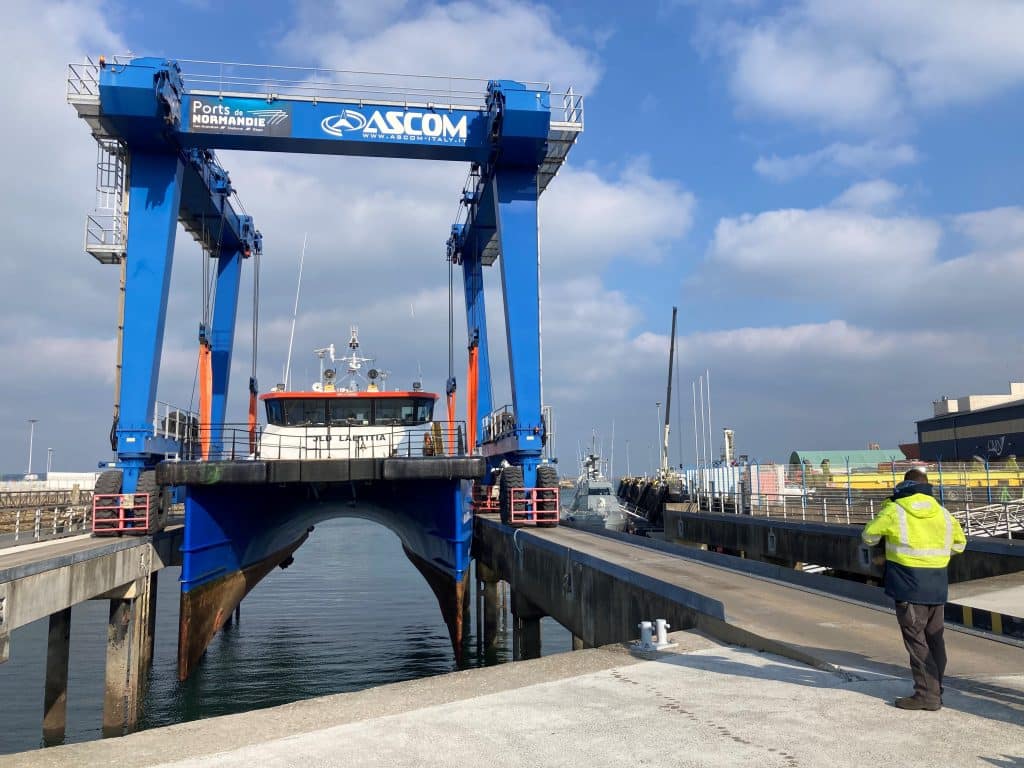
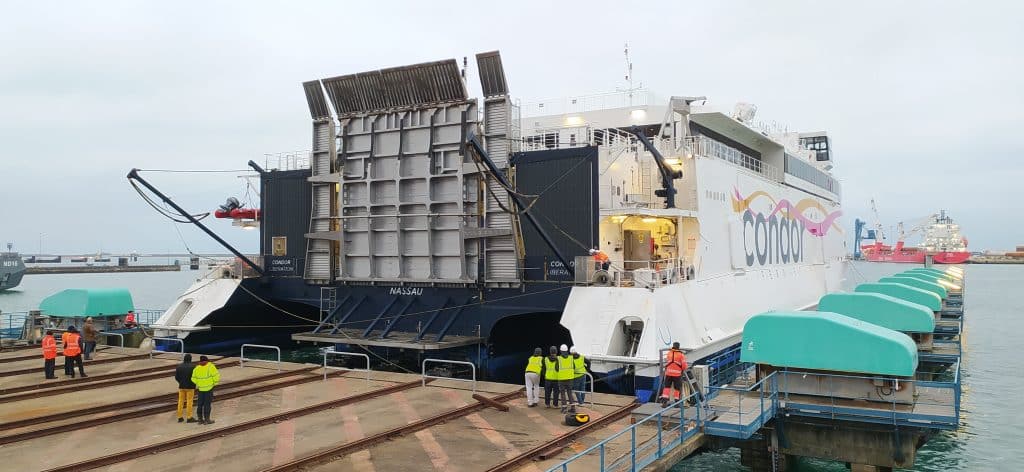
With 6 operations, the syncrolift had its best year since the creation of Ports of Normandy in 2019.
2024 TRAFFIC FIGURES IN BRIEF
- Cross-channel: +6.36% pax / +0.51% in tonnage / +1.58% HGVs
- Conventional: +6.94% in tonnage
- Cruise: 70 calls, 360,533 pax
- Fishing:
o Cherbourg: -10.03% in tonnage / -15.84% turn over
o Dieppe: +9.64% in tonnage / -4.22% turn over - Ship repairs: 358 movements
o -3.23% at Cherbourg
o +35.88% at Dieppe - Yachting
o -1.51% ships at Cherbourg / -8.31% overnight stays
o +12.91% Caen-Ouistreham / +1.41% overnight stays
o +3.53% ships at Dieppe / -19.45% overnight stays
OUTLOOK FOR 2025
1 - REINFORCING OUR POSITION AS CROSS-CHANNEL LEADER WEST OF THE DOVER STRAIT
Cross-channel operations remain the No. 1 business for Ports of Normandy which continues, after the Brexit phase, to convert its terminals to align with decarbonization.
Shore power for ships alongside
To achieve a reduction of greenhouse-gas emissions of at least 55% by 2030 and climate neutrality by 2050, the maritime sector and in particular ports must intensify their efforts.
By 1 January 2030, European ports will be required to provide an electrical power supply on the wharf for container ships and passenger ferries. This must be proportional to the number and duration of the visits.
This requirement directly concerns the three ports of Ports of Normandy: Caen-Ouistreham, Cherbourg and Dieppe. To fund the projects, Ports of Normandy recently obtained 10.7 million euros from the European Union via the Alternative Fuels Infrastructure Facility (AFIF) scheme.
- Caen-Ouistreham: In the spring of 2025 this pioneering port will be welcoming the Guillaume de Normandie, after her very recent naming ceremony in Spain. This hybrid vessel runs on LNG and electricity. To accommodate the vessel, works on the DAC 8 fender have been scheduled. This will optimize the ferry's energy consumption when casting off. Budget: €4M for the ferry terminal and €1.77M for the electrical connection by ENEDIS. A public consultation for the Ouistreham works is currently open for input, and the works are scheduled to begin in the spring of 2025 to coincide with the arrival of the new ferry.
- Cherbourg: This avant-garde port is planning the provision of a 27 MVA electrical supply for ferries and cruise ships. Budget: €20.6M for the ferries and €11.5M for the cruise ship business.
- Dieppe: Launching of studies with a budget of €150K for the preliminary analyses and an estimated €3M for the future works.
Ports of Normandy is benefiting from EU funding of €10.74M to help it deploy shore-power provision on the wharves of Ouistreham and Cherbourg.
Completion of the rolling road terminal in the Port of Cherbourg
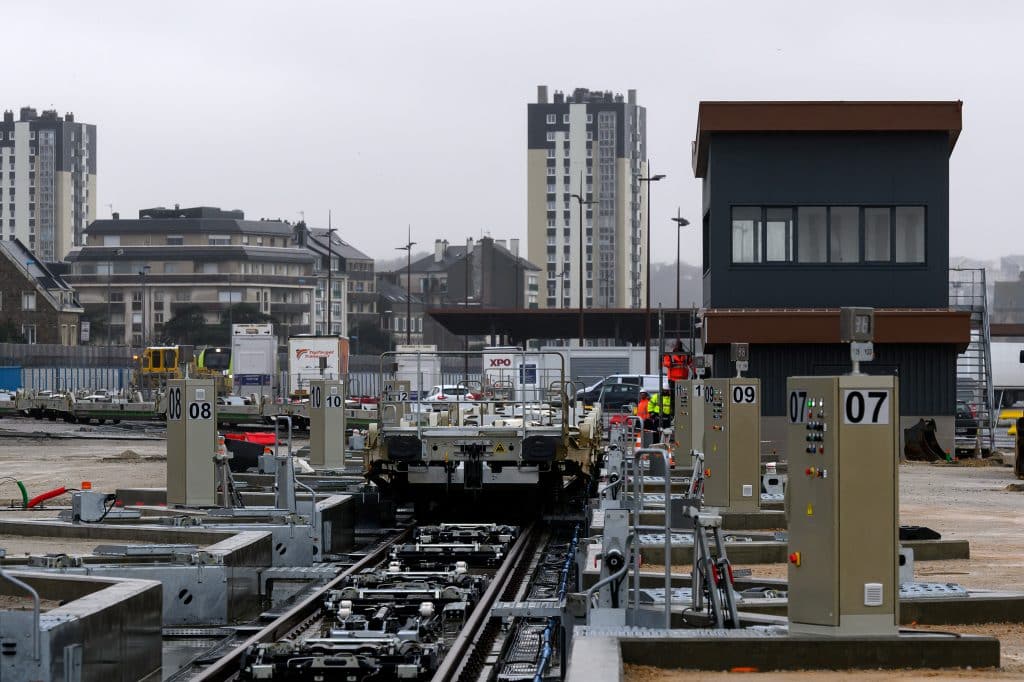
The Port of Cherbourg is making a significant step towards decarbonizing the transport of goods in Europe with rolling road operations starting in 2025.
Last December the first test train successfully completed the trip to Cherbourg docks, thus confirming the proper working order of Cherbourg's railway infrastructure and preparing the way for rail services to restart.Starting in the spring of 2025, a train service for semitrailers will run between Cherbourg and Bayonne. It will pass through the centre of Cherbourg and serve strategic destinations such as Spain, Great Britain and Ireland. It is a significant step in reducing the carbon footprint of the transport industry. Indeed, each train has the capacity to replace 42 trucks which would have had a combined emission of 30,000 tonnes of CO2 per year.
This project has a global budget of over 17 million euros and is funded by:
- Normandy Council: €1.7M
- Manche Council: €850K
- Council of the Cotentin Urban Area: €285K
- Ports of Normandy: €8.7M
- European Union: €1.4 million
- Port of Cherbourg: €4M
The next stages of the project involve the finishing touches, such as connecting the mains services, road markings, and erecting a fence separating the terminal from the ZAR zone. Additional tests have been scheduled prior to the official launch of commercial services.
This project is part of an ambitious plan to make Cherbourg an essential link in the provision of rail-freight services in the west of Europe, and to tackle current environmental issues.
La Croix Morel: future economic hub in the service of the port
La Croix Morel was identified in 2006 as a strategic zone for economic development linked to the port. Its proximity to the port and good road communications makes it the ideal place for businesses that are involved in port activities, the development of marine re


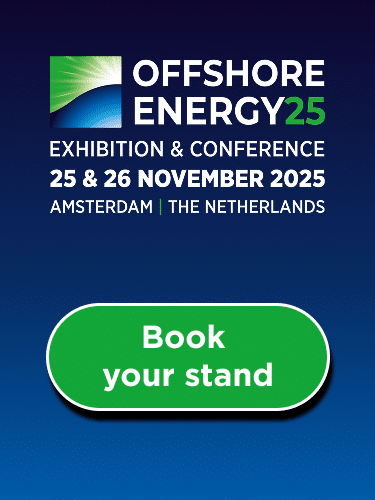











.gif)

